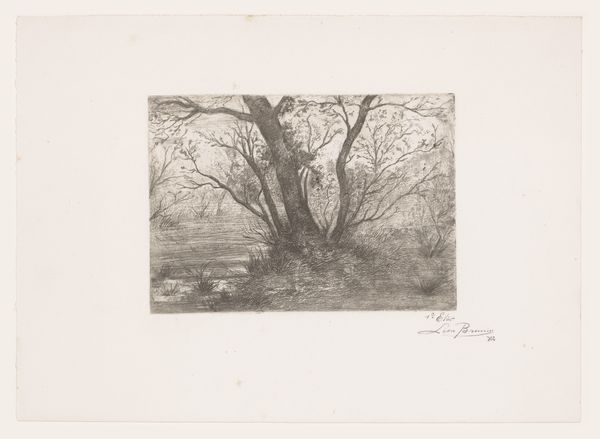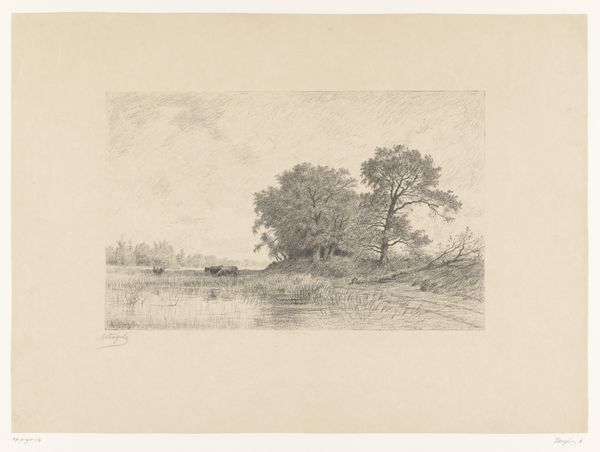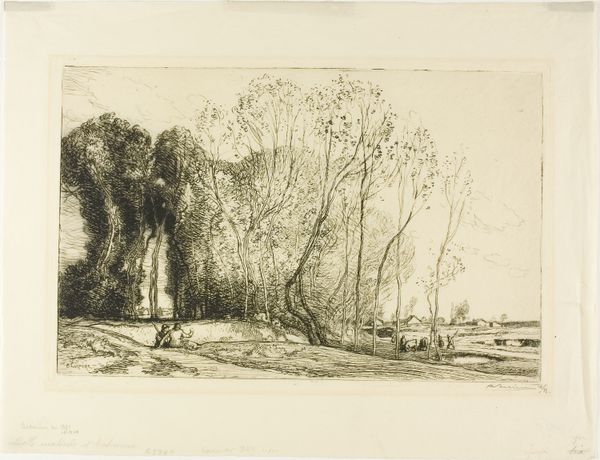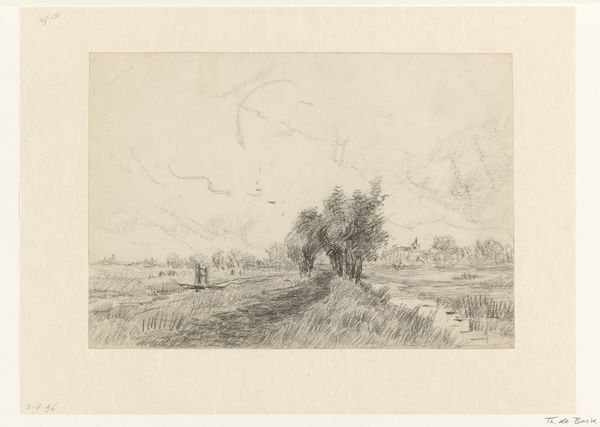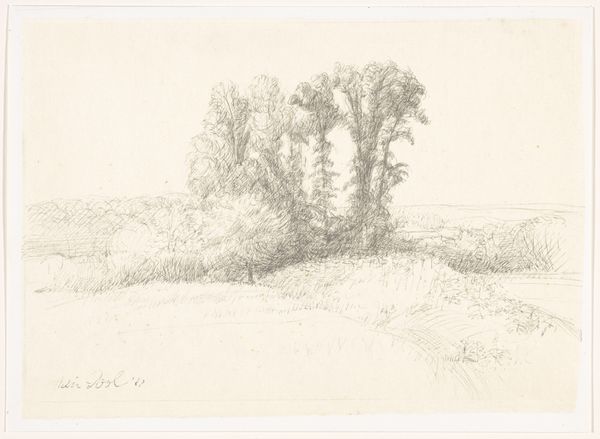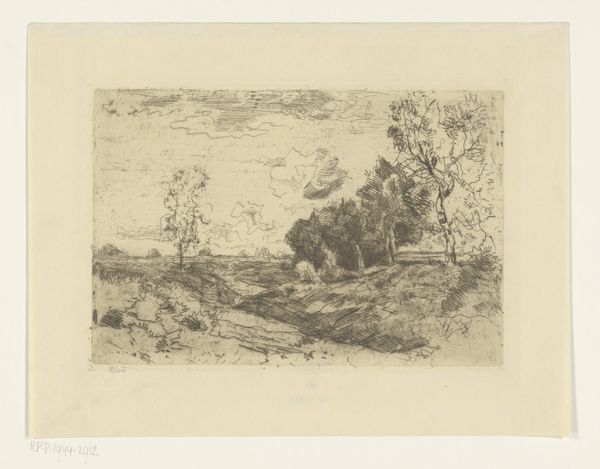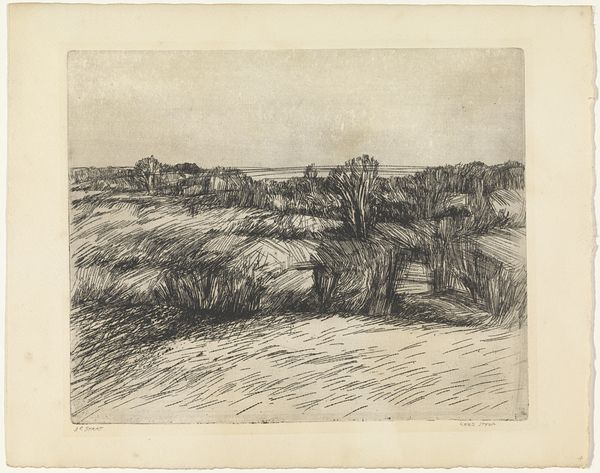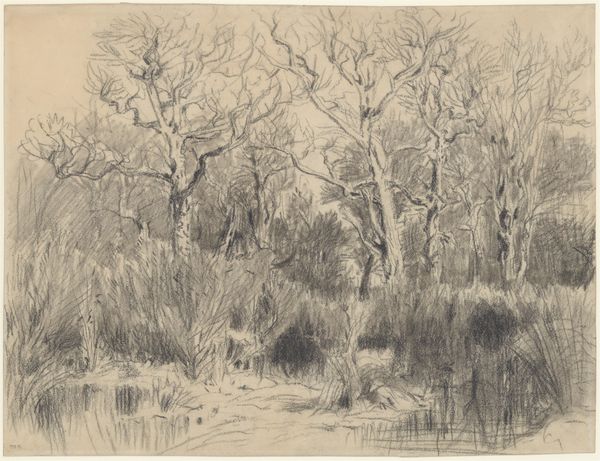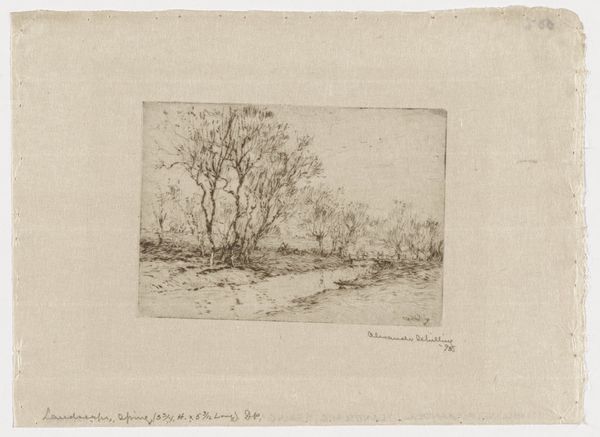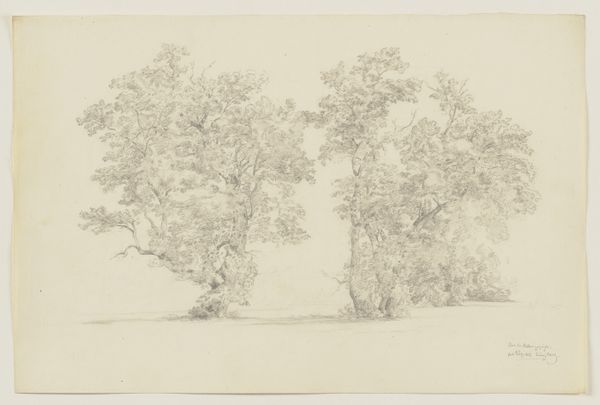
Dimensions: height 235 mm, width 290 mm
Copyright: Rijks Museum: Open Domain
Théodore Tscharner made this etching, "Moeras bij zonsopgang," which translates to "Swamp at Sunrise," sometime in the 19th century. Tscharner seems to play with what constitutes the picturesque, and to what extent the values of the urban art world should dictate what is worthy of aesthetic consideration. The Dutch landscape tradition had always held a mirror up to the nation. In the 17th century, it was used to celebrate national identity and commercial success. By the 19th century, the country was industrializing rapidly, changing the relationship between the Dutch and their natural environment. Tscharner’s choice of subject matter - a swamp - can be understood as part of a growing artistic interest in the relationship between the urban and the rural, and to questions of conservation and national heritage. To better understand Tscharner’s art, we might turn to sources that document the changing status of landscape in the 19th-century Netherlands. The social life of art is always so interesting!
Comments
No comments
Be the first to comment and join the conversation on the ultimate creative platform.

